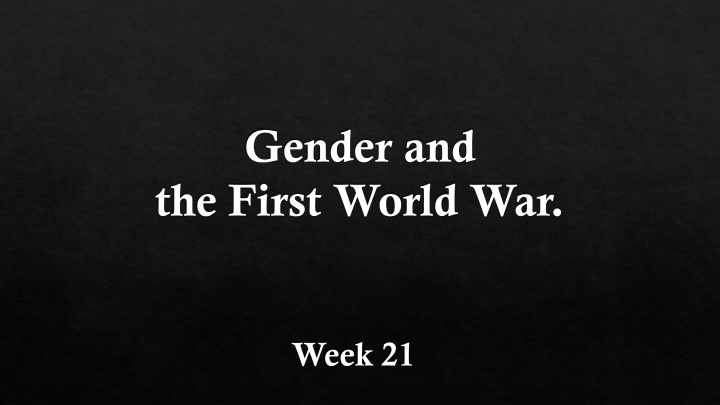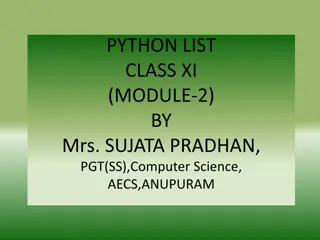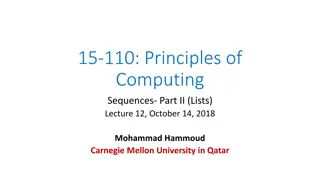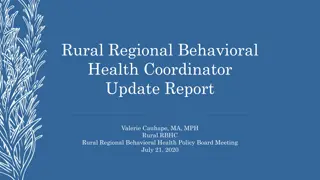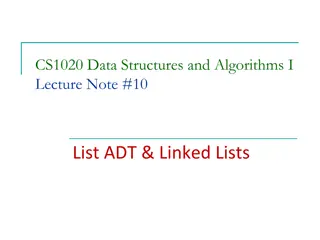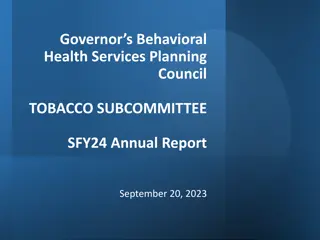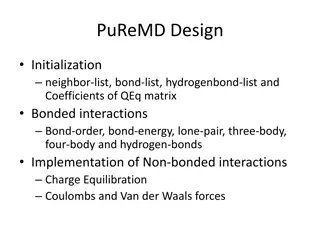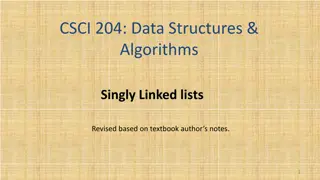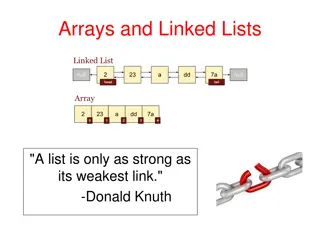Problem Lists in Behavioral Health
This content discusses the importance of problem lists in behavioral health settings, detailing the inclusion criteria and necessary elements. It presents various examples of problem lists and their formats, emphasizing the role they play in supporting medical necessity and treatment planning. Providers are encouraged to maintain accurate and updated problem lists to enhance the quality of care provided to beneficiaries.
Download Presentation

Please find below an Image/Link to download the presentation.
The content on the website is provided AS IS for your information and personal use only. It may not be sold, licensed, or shared on other websites without obtaining consent from the author.If you encounter any issues during the download, it is possible that the publisher has removed the file from their server.
You are allowed to download the files provided on this website for personal or commercial use, subject to the condition that they are used lawfully. All files are the property of their respective owners.
The content on the website is provided AS IS for your information and personal use only. It may not be sold, licensed, or shared on other websites without obtaining consent from the author.
E N D
Presentation Transcript
Gender and the First World War. Week 21
Overview: Introduction Pre-war masculinity: imperialism and homosexuality. Impact of war on masculinity: actual v aspirational. Pre-war femininity: The New Woman. Impact of war on women: A false dawn? Conclusions.
Introduction Few would agree with Paul Fussell s claim that the First World War represented an absolute break with the past (The Great War and Modern Memory). But often seen as crucible where modern world forged. War crystallised the social, political and cultural changes emerging in the 1890s rather than necessarily acting as an agent of change itself. Samuel Hynes argued that war was an imaginative as well as a military and political event.
Pre-War Masculinity: Imperialism and Homosexuality
Masculinity and Imperialism UK involved in over 250 conflicts during Victorian era yet most men not fit enough for military service. Patriotism, action hero, explorer stereotype important to fuelling imperialism as soldiers and civil servants needed abroad. Flight from domesticity challenges marriage and family structures. (John Tosh) Shift from civility and gentlemanly conduct to brutality and imperial masculinity. (Bradley Deane)
Masculinity and Homosexuality Threat to dominant masculinity. Oscar Wilde Trial, Criminal Law Amendment Act (1885), art and literature cemented idea of homosexual identity and brought it into public consciousness. Wilde s trial created a moral panic that inaugurated a period of censorship affecting both advanced women and homosexuals (Elaine Showalter). censorship affected all men, not just homosexuals, and forced them to reaffirm their identity by conforming to a masculine ideal . (Catherine Pope)
Impact of War on Masculinity: Actual v Aspirational
Dominant Masculinity War helped cement warrior masculinity. Men who did not want to participate in the war were disenfranchised, lost their jobs and were sometimes imprisoned. They were attacked for their lack of patriotism and masculinity. Yet often supported war effort by working in medical role on front line.
Lawrence of Arabia: Aspirational Masculinity Graham Dawson, Soldier Heroes, 1994. Liaised with Arab leaders during revolt against Ottomans during WW1. Recorded adventures in autobiography/novels, later turned into film in 1960s. Captured popular imagination: English gentleman living as a native . Themes of imperialism, physical competency, intellectual ability and heroism. Masculinity is not about defining norms but exploring why norms become norms . Aspirational v Actual .
Masculine Gender Crisis Men felt themselves emasculated by the horrors of the war experience. Many of the men who survived the war ended up maimed or impotent. Work of the war poets: Sassoon, Brooke, Owen, Graves etc many of whom died a tragic and early death represents bleak realism of war for men. Home and the Western front were not separate spheres, and men s identities were not split into aspects of the soldier and the civilians. For survivors family life impacted due to potential psychological trauma and limited breadwinner capacity. (Holtby)
Pre-War Femininity: The New Woman
The New Woman and education. Victorian Angel of the House increasingly challenged by concept of New Woman. Term 1st coined in 1894 by novelist, Sarah Grand referring to women who asserted their entitlement to a public role. Partly result of increasing female participation in formal education. Many universities admitted women 1870s on but1900 when numbers started rising. Women represented 16% of students in 1900; 24% in 1920 and 27% in 1930. Historians traditionally focus on Oxbridge but broadening perspective to look at all graduates and white blouse workers. (Gillian Sutherland)
The New Woman and feminism. 1890s: feminism 1stin popular usage in UK (Charles Fourier, 1830s) New women often demanded legal and political rights centred on contraception and abortion. Most of those advocating voluntary motherhood supported some eugenic ideas. After the war this was accentuated in the debate on welfare feminism. Press cemented idea of New woman in Popular consciousness and led to fear/mockery. Cartoons in Punch for example, masculine women bullying effeminate men.
Impact of War on Women: A False Dawn?
Conventional Femininity Impact on gender identities is ambiguous and highly debated. For anti-feminists war was opportunity to restore the natural gender order of warrior versus homemaker. Female participation in war effort perceived as extension of domestic duties. Women s participation often in a supportive capacity and reinforces imperial gender divide often women at home men abroad.
Women and Work. Historical debate particularly concerned with women entering workforce as sign of emancipation/progress. Participation, gave women status for 1st time as full citizens taking part in military defence of the nation.
Women entering workforce (000s) Females in workforce (%) Year 1914-5 382 - 1915-6 563 26.5 1916-7 511 46.9 1917-8 203 46.7 Sylvia Pankhurst: For women of means the war offered undreamt of activities, opportunities, positions and a great unlocking of their energies .
Women and Work HOWEVER Employers emphasised that women were temporarily taking men s jobs Working class women exploited in low-paid, monotonous jobs. Most women still engaged in unpaid family duties, or assumed double burden. Some of the voluntary organisations were actively anti-feminist in focus. For example, the Women s Land Army (Bonnie White)
Women and Work Wartime mobilisation of women had little long term impact on patterns of female employment. In UK in 1951 was smaller percentage of women working than in 1911.
Top 10 Occupations for women 1918 Bottom 10 Occupations for women 1918 Hospitals Tailoring and dressmaking Hosiery Teachers Other clothing trades Linen, jute and hemp Tobacco Silk Stationery, cardboard boxes, gum, ink, pencils Docks and wharves Trams and omnibuses Gas, water and electricity Mines and quarries Building trades Shipbuilding Iron and Steel Other transport Vehicles Textiles Railways
Conclusions In 1929, the year after female suffrage was made universal in England, an English journalist wrote: The tide of progress which leaves women with the vote in her hand and scarcely any clothes on her back is ebbing and the sex is returning to the deep, very deep sea of femininity from which her newly-acquired power can be more effectively wielded Although historians are divided about the extent to which the war led to any change in the status of women, it is clear that most people in the 1920s believed war had dramatically altered the relationship between the sexes. (Joanna Bourke) There was no straightforward economic, ideological or political progress for women after the war. Scholarly debate centres on how different people experienced war, extent of change and continuity and to what extent the conflict served to crystallise previous trends?
